Back in 2018, Sue Rowe explained the work done by Scanline VFX on The Meg. She went on to work on A Series of Unfortunate Events, Shadow and Bone, Eternals, The Adam Project and Slumberland.
How did you and Scanline VFX get involved on this show?
Scanline has a long history with The Meg franchise, so we were approached by Warner Bros. early on.
Sue, what was your feeling to be back into this franchise?
I had such a fun time on The Meg that I was really happy to be involved again. I met with the VFX Supervisor Pete Bebb and he showed me the opening lines of the movie and I was 100% in, who doesn’t want to animate a T-Rex and Megalodon?!
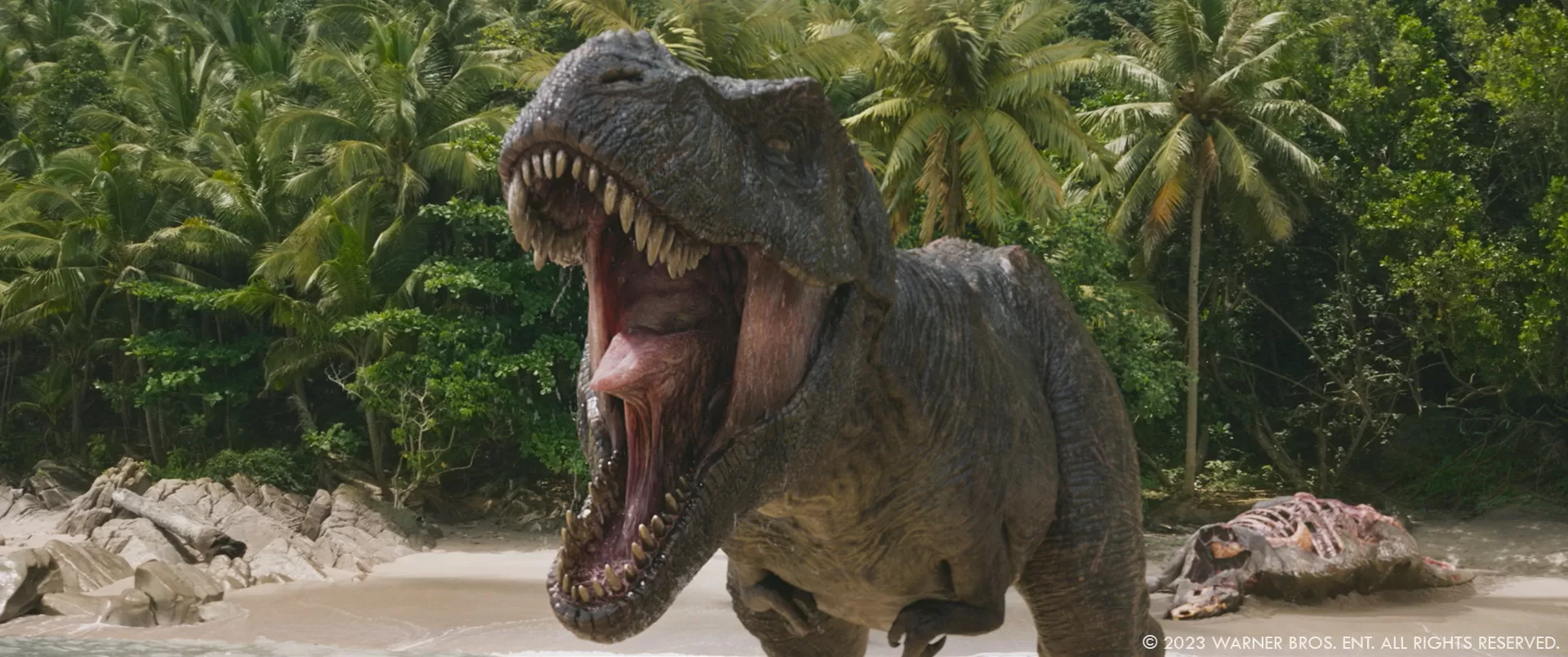
How was the collaboration with Director Ben Wheatley and VFX Supervisor Pete Bebb?
The spirit of the film is action and adventure with humour and a few jump scares! I think Ben’s background in horror movies put him in the right place for this film! Ben and Pete did a huge amount of previz before we started on the shots so Ben knew what he wanted and Pete guided him to get the best-looking shots.
Anyone who knows Pete knows what a calm and knowledgeable guy he is. As an ex-facility supervisor he knows the business process and how to get the best results for both the studio and the facilities. We really were a happy team, it really felt like a partnership, and his friendly manner made us want to excel creatively for him.
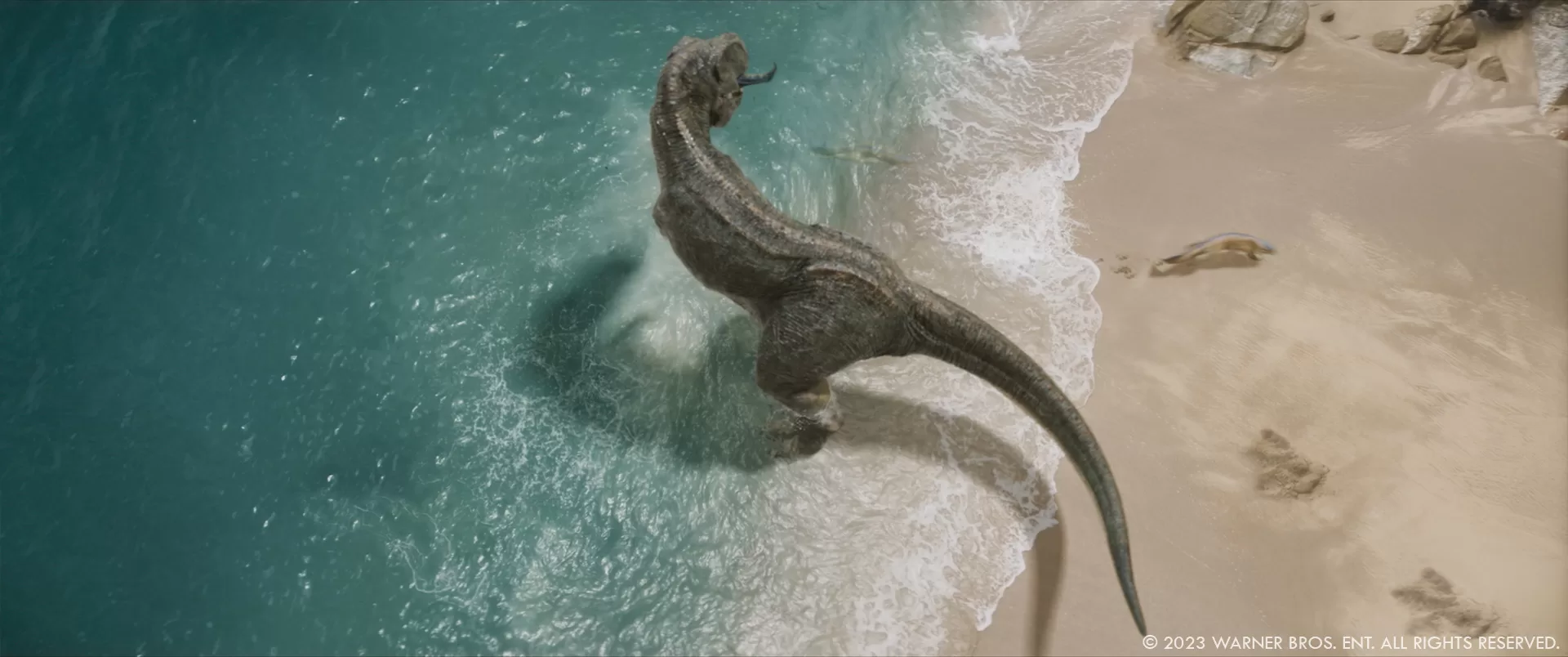
How did you organize the work with your VFX Producers?
I like to work very closely with my VFX Producers, we are a tight team. Alain Lalanne and Melissa Olsen were excellent. Alain and I did the bidding and the finances and Melissa and I managed the project day-to-day, resourcing the show and planning creatively. Melissa and I had worked together in the past so we had a short hand and a mutual respect. She guided the production at Scanline with kindness and respect.
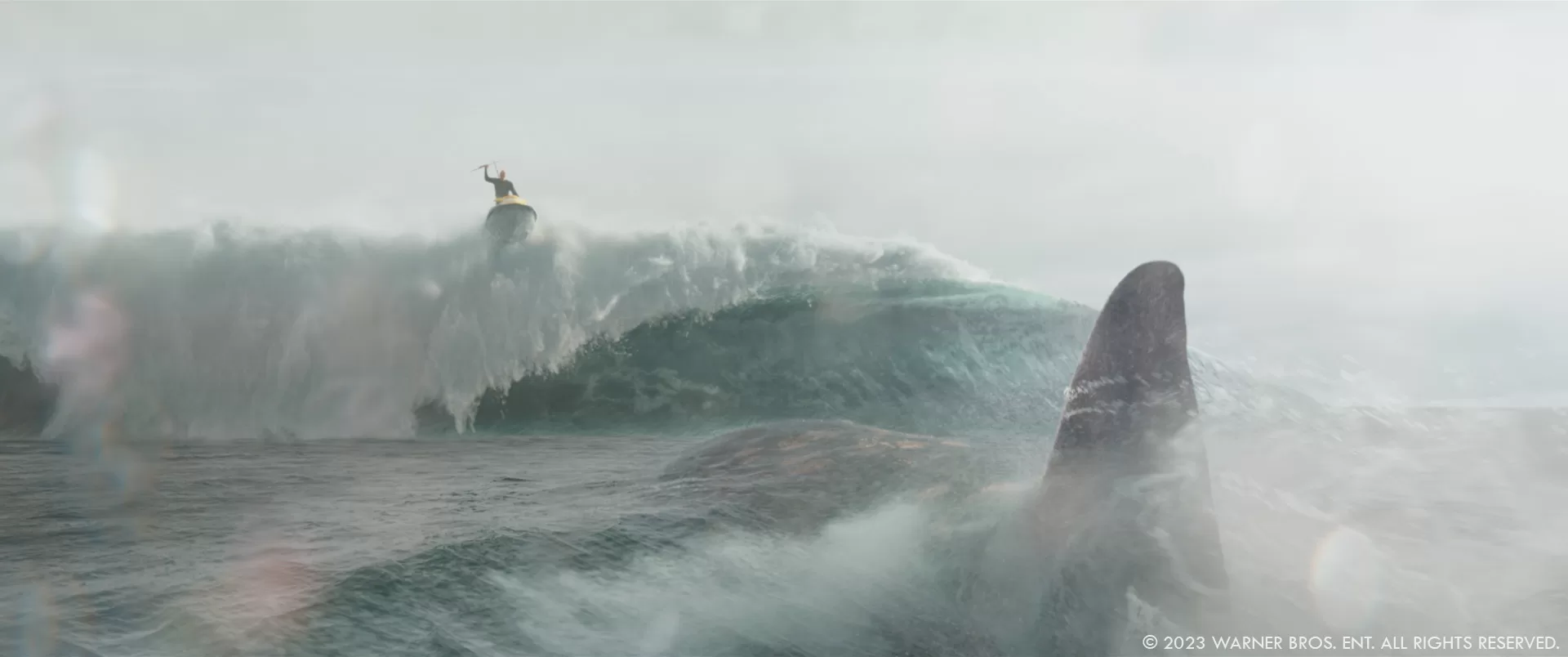
How did you split the work amongst your and the Scanline VFX offices?
Scanline is a truly global company; we work across multiple time zones. For “The Trench” we had two main teams – North America (NA) and Europe (EU). I headed the NA side while Roland Langschwert and Sebastian Becker were co-VFX Supervisors on the EU side. Roland, Sebastian and VFX producer Julia Smola were a dream to work alongside. They were based in Germany with animation in London. We had some of our FX team in Seoul, we have a very talented team there.
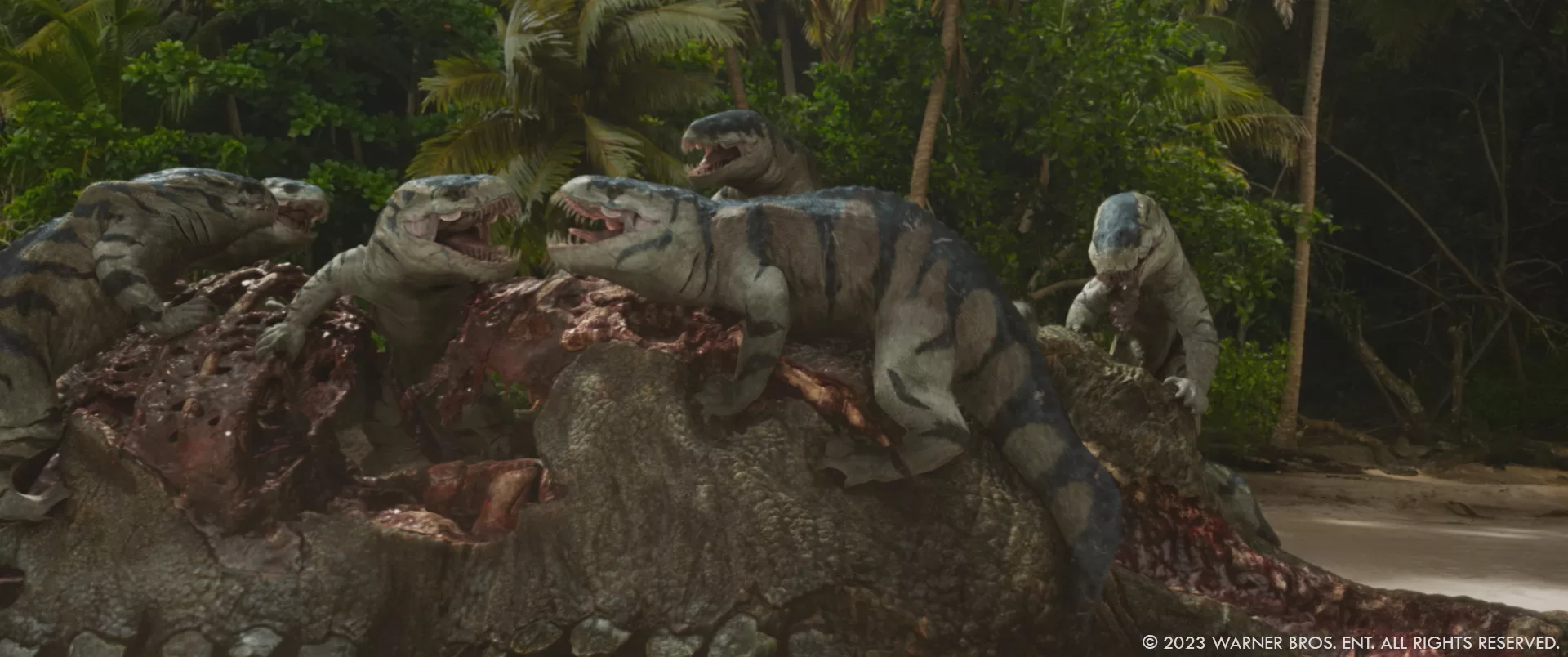
What are the sequences made by Scanline VFX?
We did the opening sequence and the 3rd act – the ending of the film. The opening sequence was my favorite. We set the scene with a prehistoric dragonfly fluttering across screen, an active volcano in the background, then we see a lizard flick its tongue and eat the dragonfly – so begins the circle of life, ending with a T-Rex being eaten by a Megalodon. It was brilliantly choreographed. What a way to open a movie!
The empty beach plates were shot by Pete’s team in Thailand and we enhanced the beach and jungle, adding the CG characters with sand and water interactions. Scanline is famous for its amazing water work and this show does not disappoint. In the first Meg, we had a single breaching Megalodon shot (which took 6 months to perfect). In The Trench there are three breaches, each one more extreme that the other!
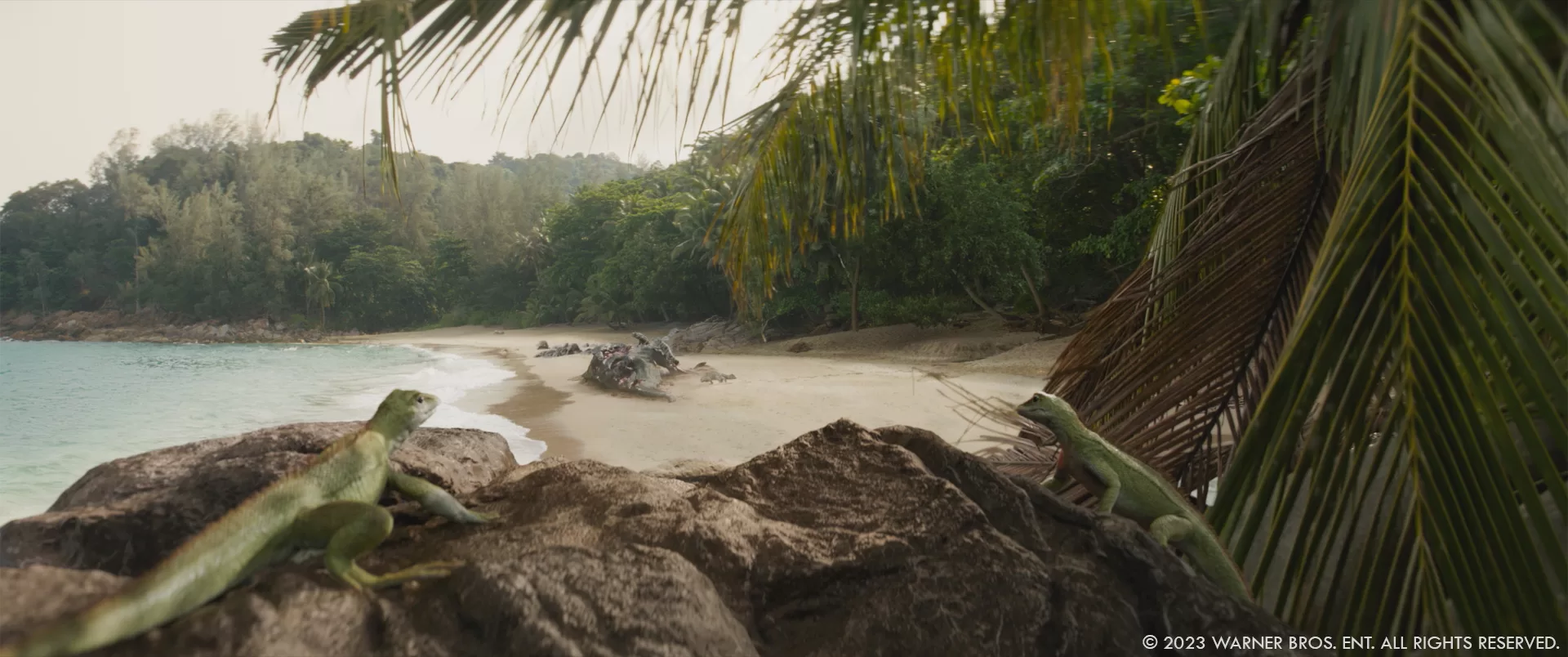
The third act was an incredible action sequence starting with the Snappers attacking a holiday resort. Snappers are made up prehistoric characters (imagine super-fast, amphibious Komodo Dragons). This sequence leads with the three Megalodon’s attacking a holiday resort – classic nod to Jaws. Then to add to the carnage, a 100 ft Octopus attacks the floating cabana, picking off people for lunch!
Finally, there is the moment where Jonas (Jason Statham) has a stand-off with Apex the largest Megalodon – Jonas fights Apex and saves his friends who are trapped out at sea in a crashed helicopter.
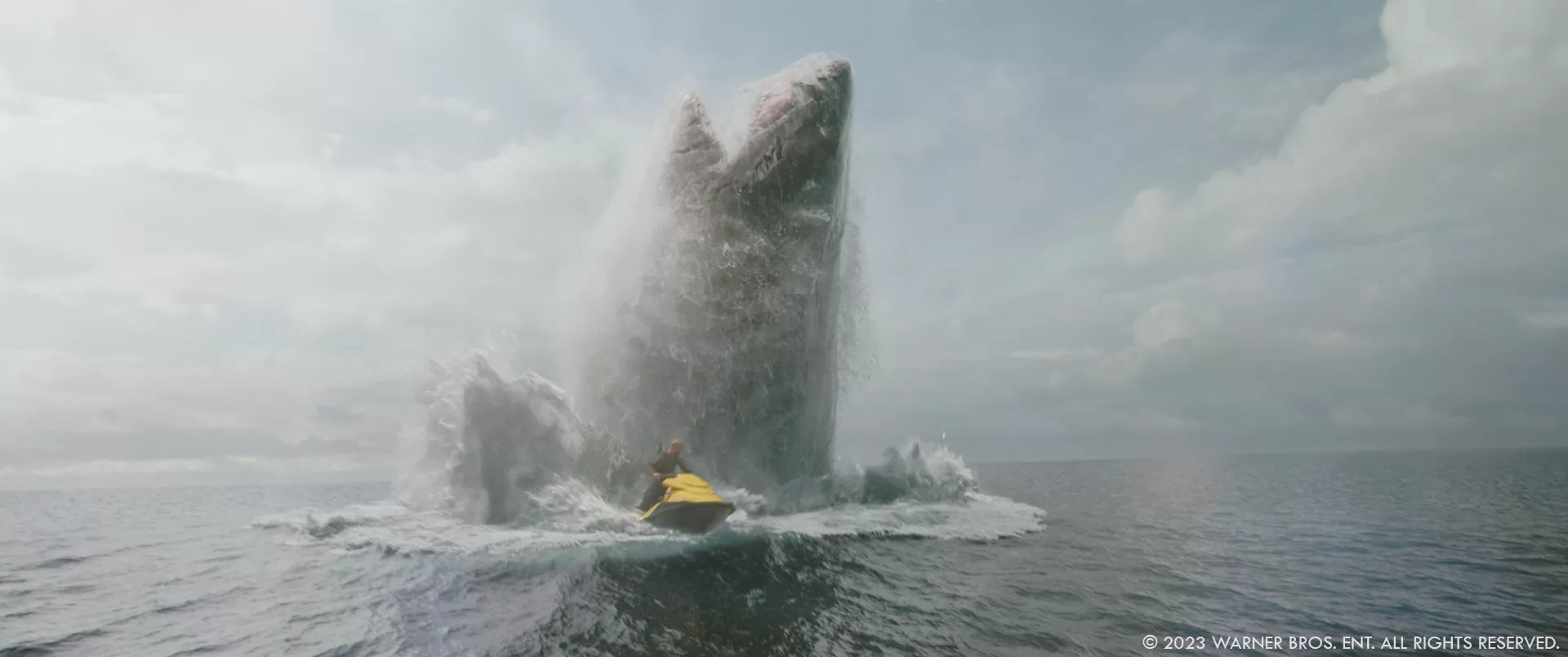
How does their massive size affect your work?
As I learned on The Meg, the biggest mistake is to make massive characters move too fast as they then start looking miniature. The challenge remains to make this still feel dynamic. If you have ever seen a whale breach or change direction under water, then you will know it is a relatively slow movement. Action sequences in the 3rd act don’t have that kind of time, so we always keep the camera moving.
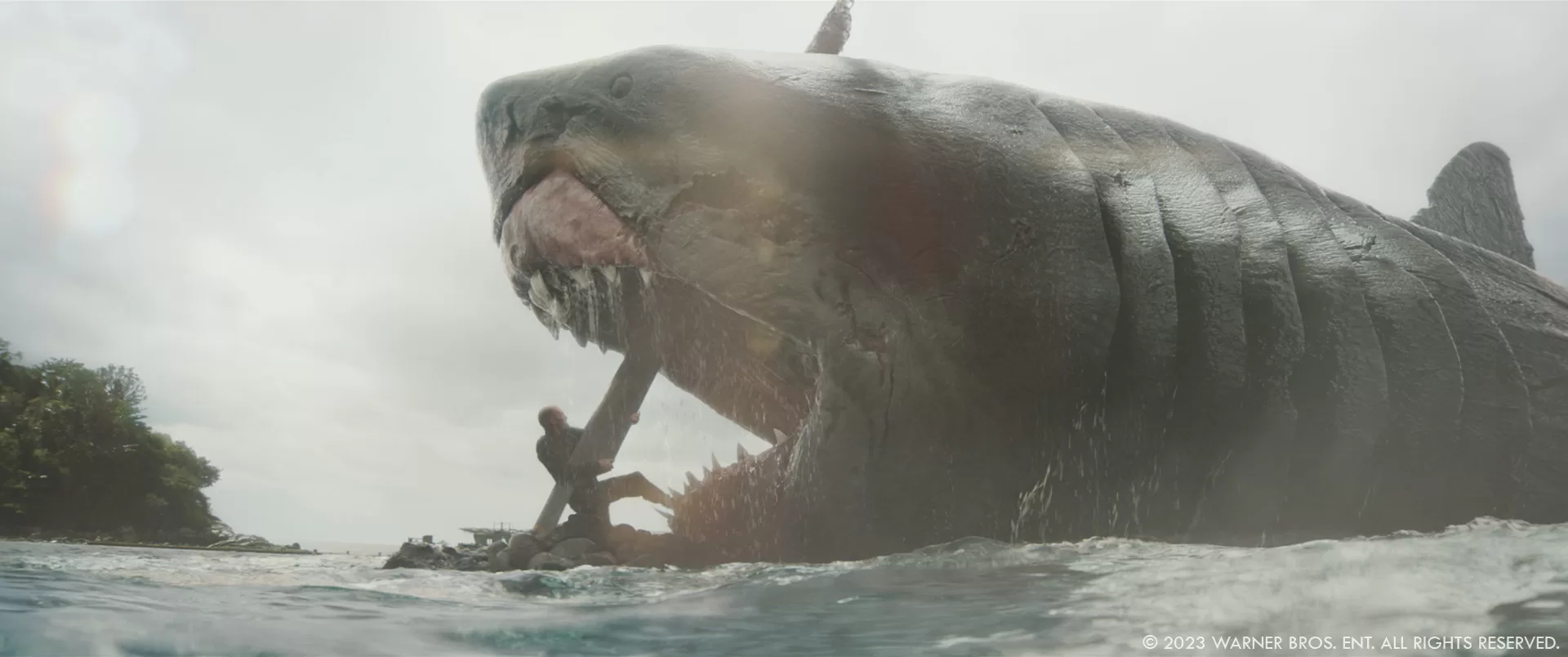
How did you manage their scale and weight?
Weight and scale are incredibly important when you are animating a 75 ft shark or a 100 ft octopus. This is where the talents of the animation teams come in to play. Christian Liliedahl was the Animation Supervisor on the ‘Octo fight’ sequence and Tom Goodenough was the EU Animation Supervisor for the death rock sequence. My background is actually in animation but I credit those two with all the talent. I would talk to Christian about some ideas and then he would go and embellish them so perfectly. My favourite thing was seeing the animation come to life once we added muscles and the creature FX – a slight head turn or the twitch of a nictitating membrane bought it all to life! These things you only get from a truly excellent animation team.
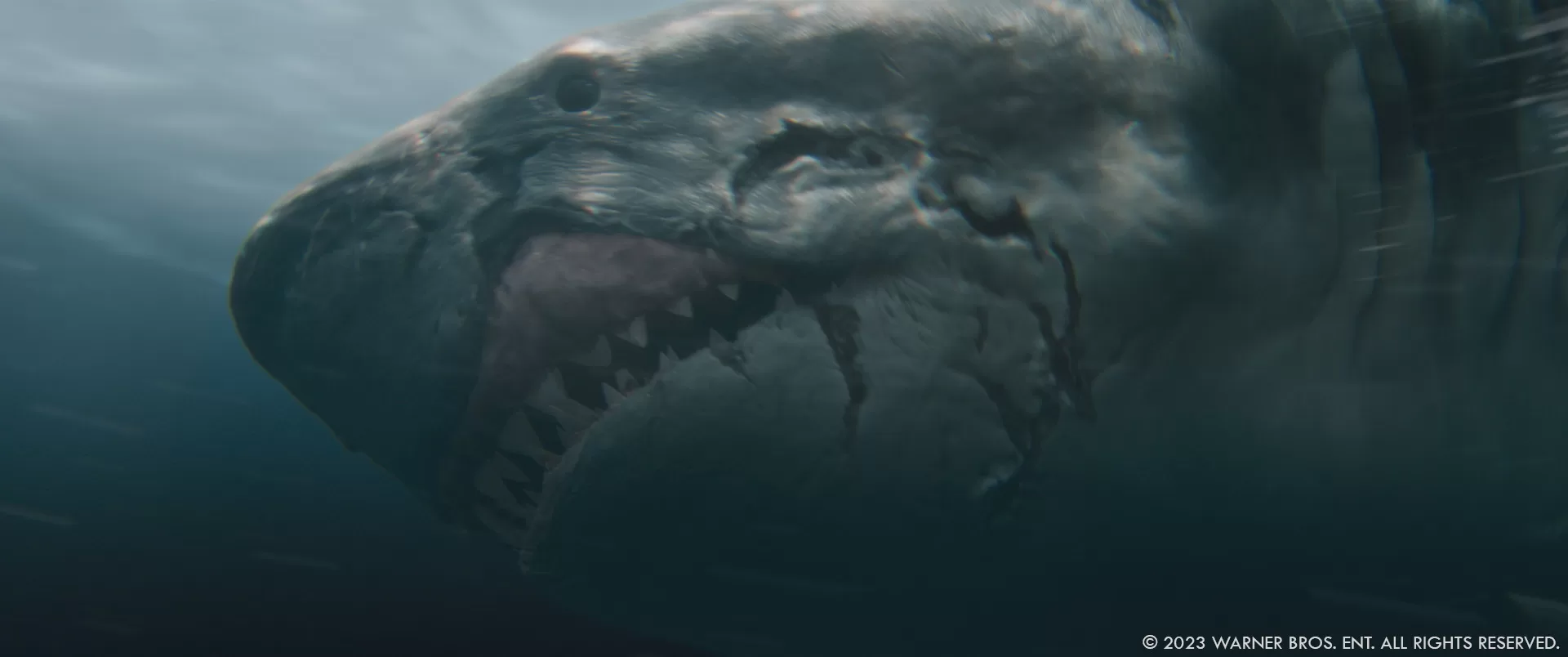
What was the main challenges with their animations?
As I had done The Meg, I knew the tricks to make sharks look angry and move with intent. But the octopus was harder – octopi are incredible sentient beings. They have a central brain but each tentacle has its own sensors – 8 extra brains if you like. We really thought about this in animation. There is a moment in the film where the octopus hides under the floating cabana and picks off its victims one by one by pulling them from above water to below. So we made sure the octopus was always searching for its next victim, each tentacle working independently of the other.
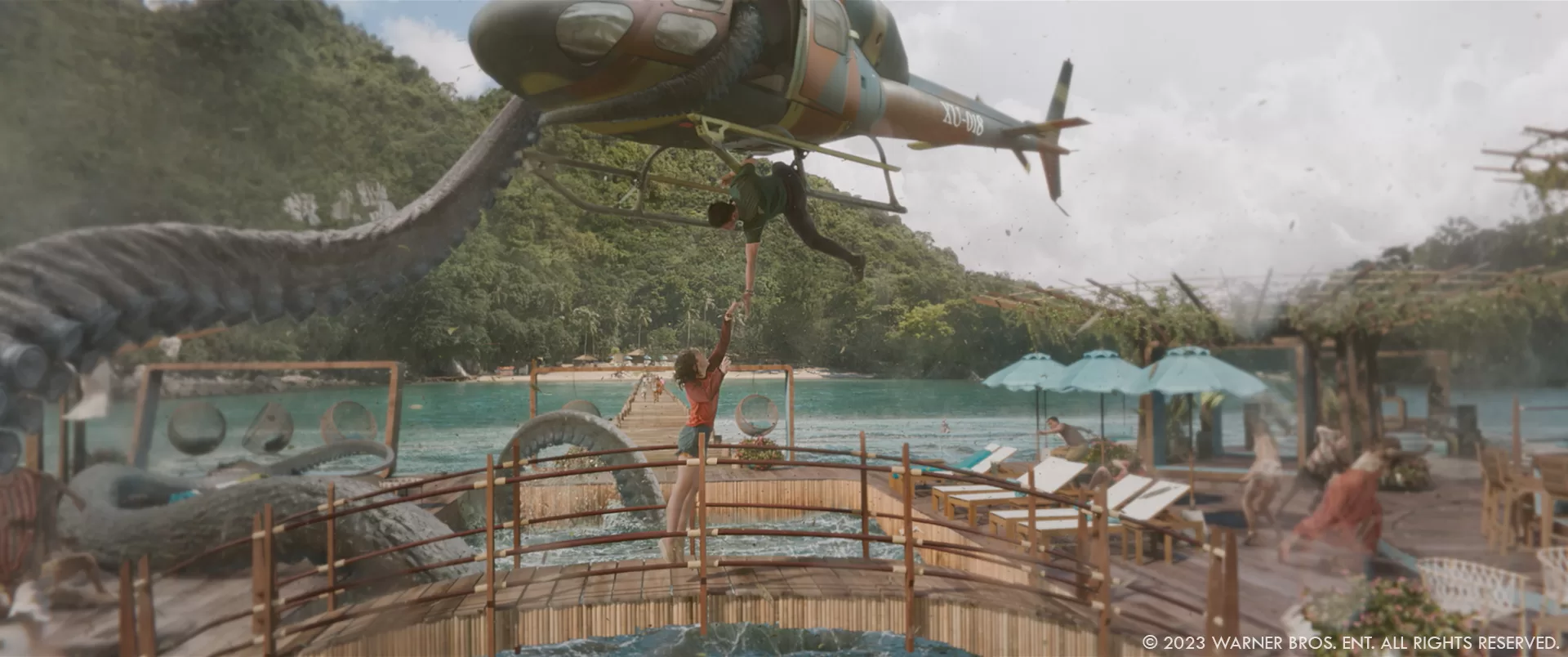
The Snappers were complex characters – Pete described them as pack animals, like Hyenas. There is a super cool shot in the opening prehistoric sequence where you see 7 Snappers feeding on carrion, fighting each other to get the best bits of the carcass. As the Snappers run up and down the rotting corpse they bite and snarl, climbing over each other. You can see the foot falls of the Snappers indent into the dead dino’s rotting flesh. That shot was one of the hardest in the movie – 7 characters each with their own moment in front of the camera.
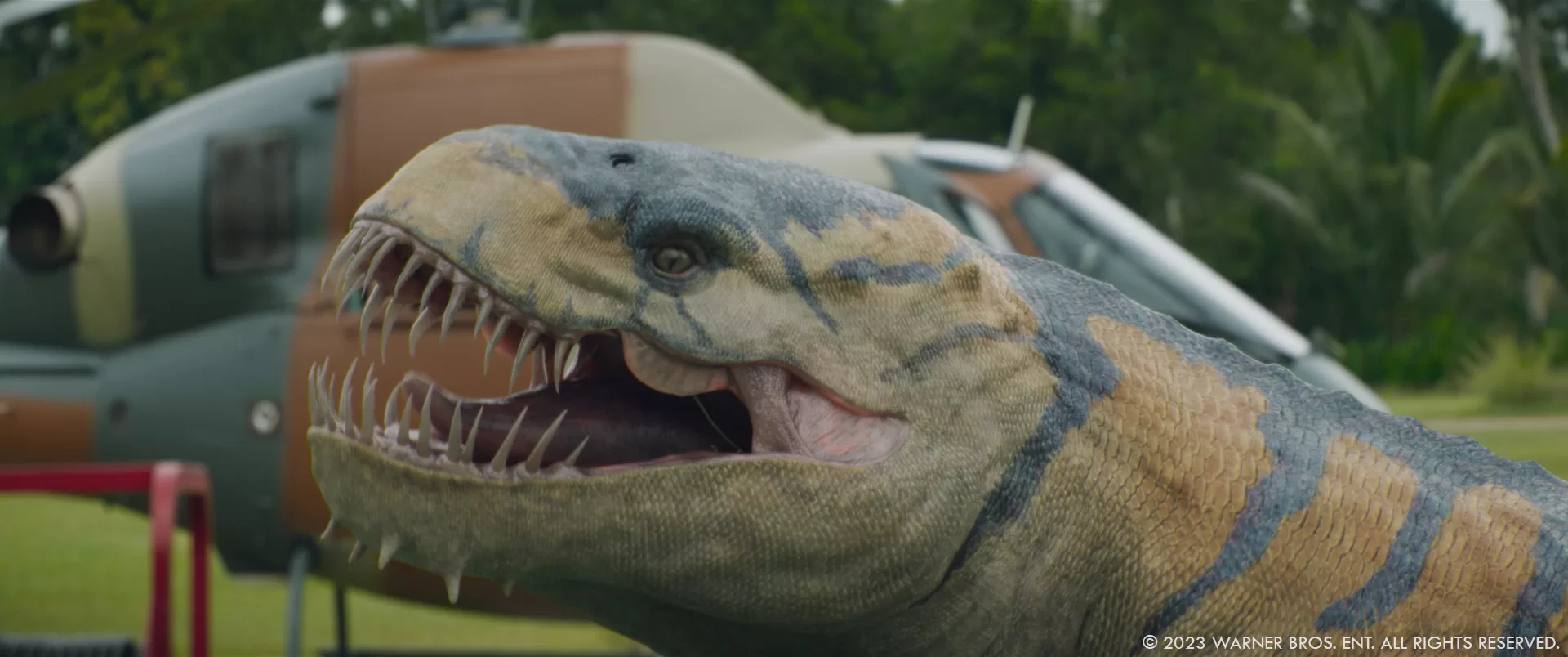
What kind of references and influences did you received for their animations?
I found an incredible bit of footage of a shark and an octopus fighting. Its black and white from the early days of documentary film making by the look of it – I showed it to Pete and he showed it to Ben and it became our touchstone for the Haiqi versus octo sequence.
Tricky question, which creature is your favorite?
The octopus was my favourite. I kind of became obsessed with octopi. I did a lot of research. I even bought a frozen octopus – defrosted it and studied it. I wanted to make sure that the octopus felt powerful and dangerous. The tentacles should feel muscular but the surface of the tentacle was more elastic and gelatinous. The suckers had this beautiful, delicate surface to them, I give credit here to the lookdev team. The subsurface scatter and the translucency of the delicate skirt (the area between the tentacles) was done so well that when we came to light it, we had so many passes to play with in comp that we were able to move ahead efficiently once the hero shots had been signed off. Incredibly, octopi can change the surface of their skin to camouflage themselves. These tiny papillae contract and they use chromatophore to change colour. They are formidable creatures.
Which shot or sequence was the most challenging?
The fight between Haiqi and the octopus was by far the hardest. It’s a five-minute beat of thrashing and fighting with complex water sims, octopus ink, blue blood and of course the Meg breaches with the octopus in its mouth! The water FX were astounding, Michele Stocco and his team worked so hard on the breach shots. My DFX Supervisor Ioan Boieriu led the FX and CFX teams, his attention to detail is why these shots look so believable and beautiful. Our mantra was to keep it real and as a result the FX looked better.
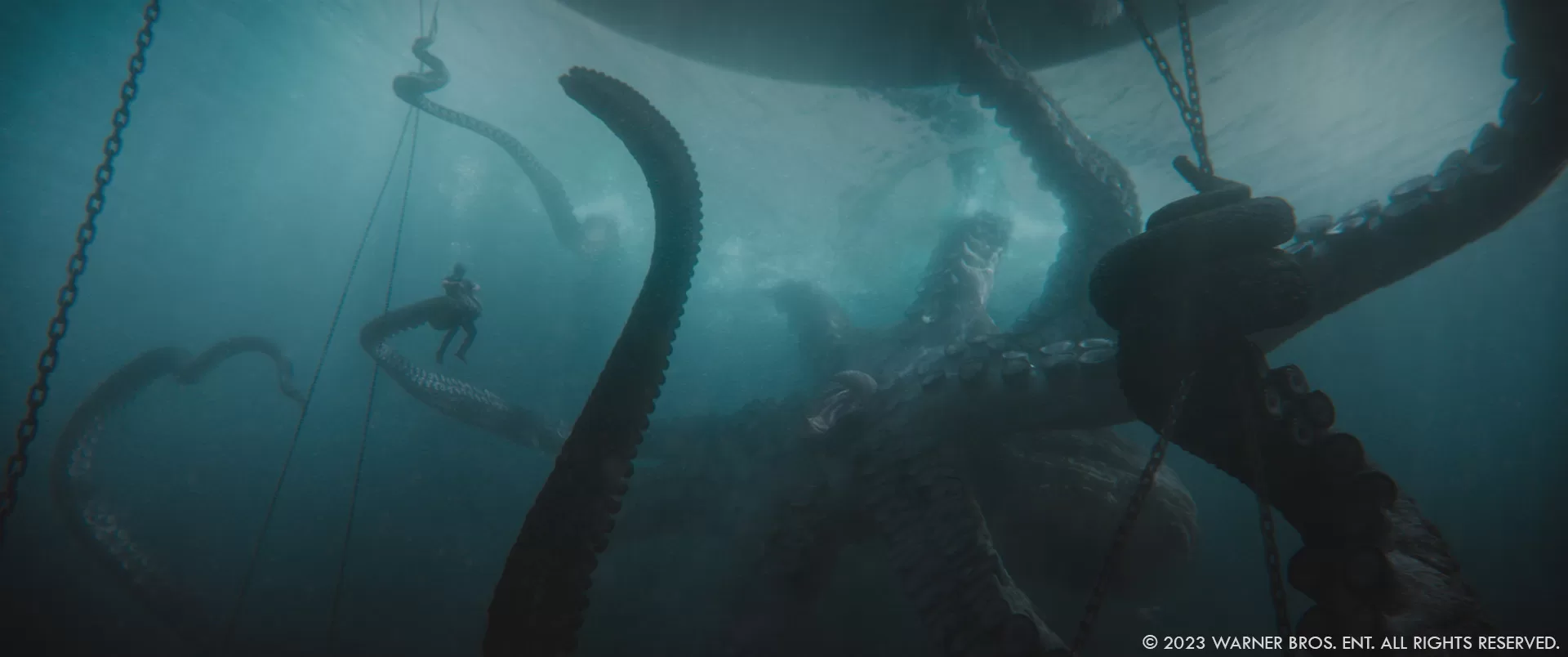
Is there something specific that gives you some really short nights?
Due to editorial changes, we were animating the shark and octopus fight with under two months until the film needed to be in the DI. However, Pete was so calm and pragmatic about this sequence. He would say what can we do in the time that we have that will look amazing. We did it together!
What is your favorite shot or sequence?
There is a shot where we see the octopus hiding under the floating cabana. We see a full body shot for the first time– before then it was just a tentacle grabbing at people. So, for me, this was a moment to show the magnitude and grace of this enormous creature. We played with the light underwater, so parts of the body were in silhouette and some tentacles were rim lit. The octopus needed to feel huge, so we worked on strong deliberate writhing movements so he felt threatening – we added depth by having two tentacles in the immediate foreground and then let it fall off into the murky water for dramatic effect.
What is your best memory on this show?
Laughing a lot with Ben, Pete and the overall VFX Producer Gavin Round at the shark mayhem we were creating!
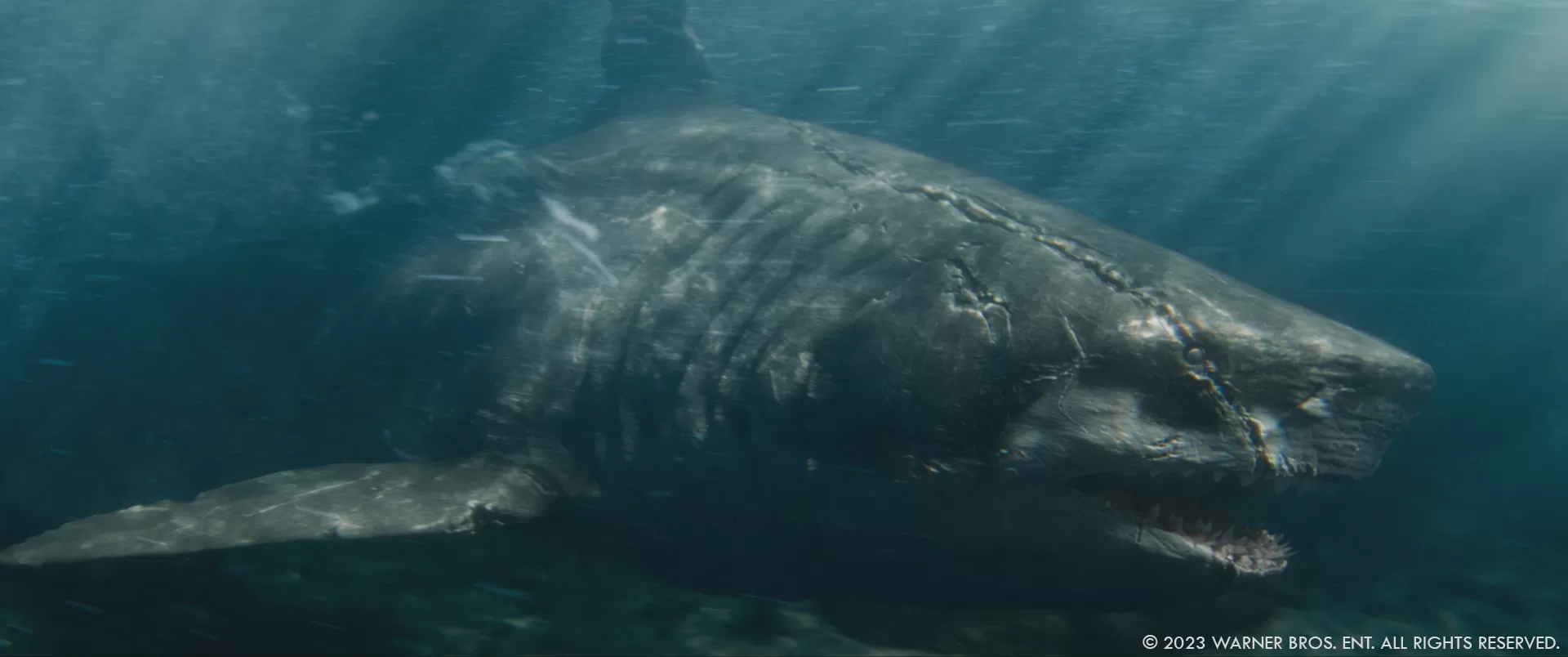
How long have you worked on this show?
18 months from start to finish.
What’s the VFX shots count?
580.
What is your next project?
Top secret for now!
A big thanks for your time.
© Vincent Frei – The Art of VFX – 2023





